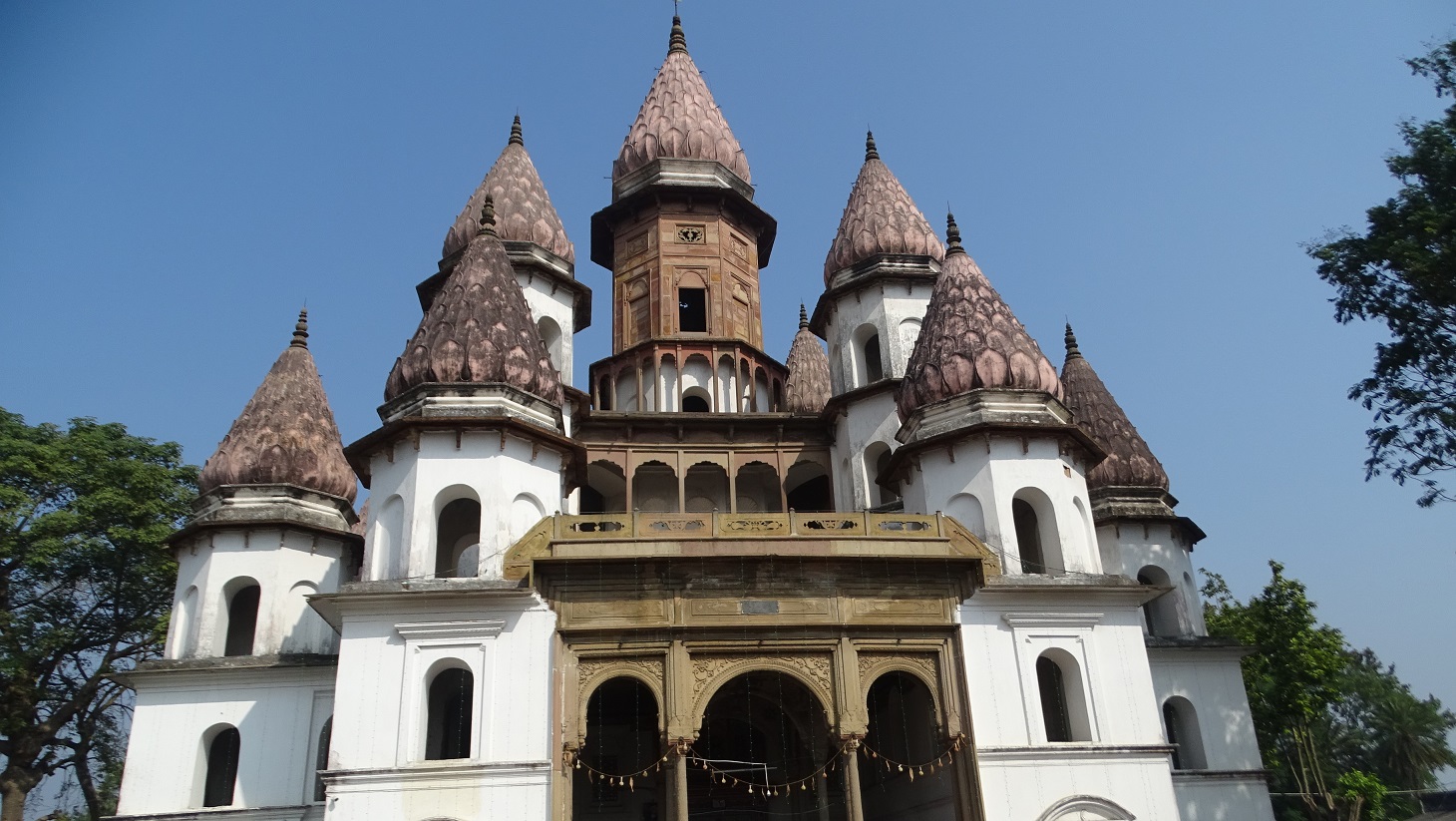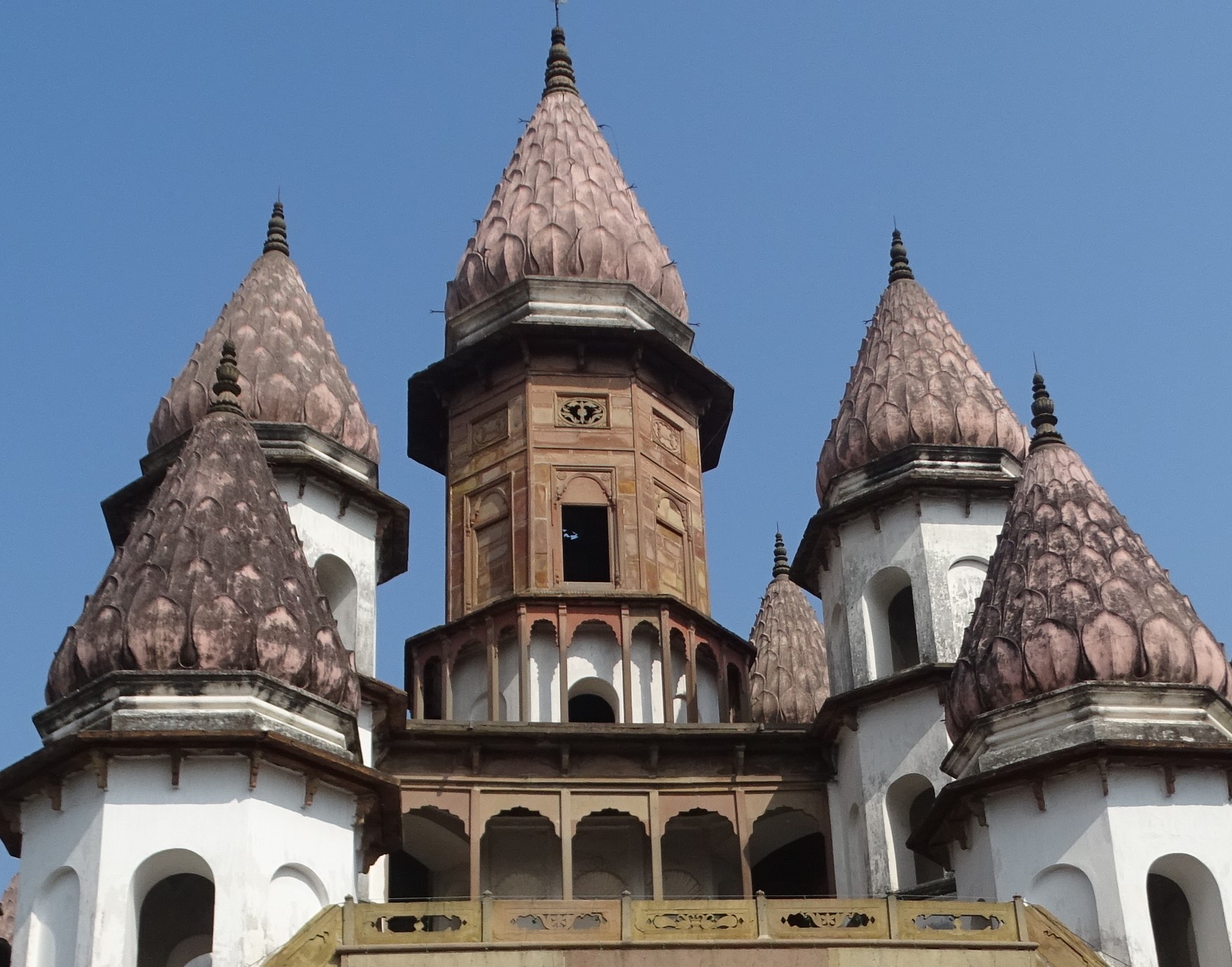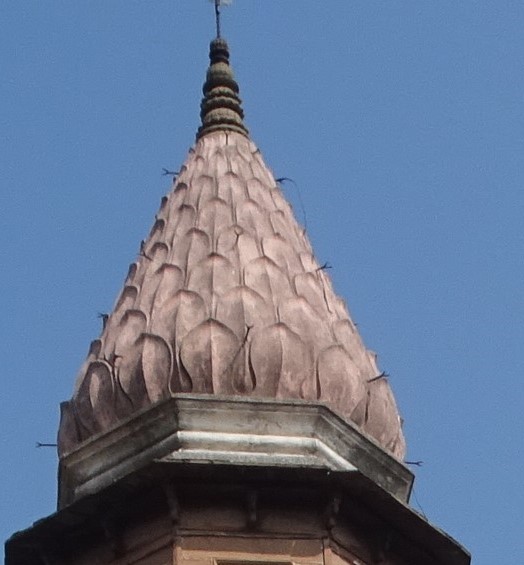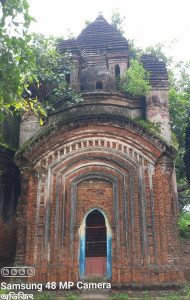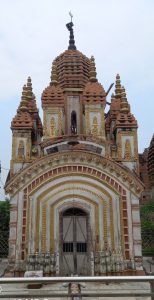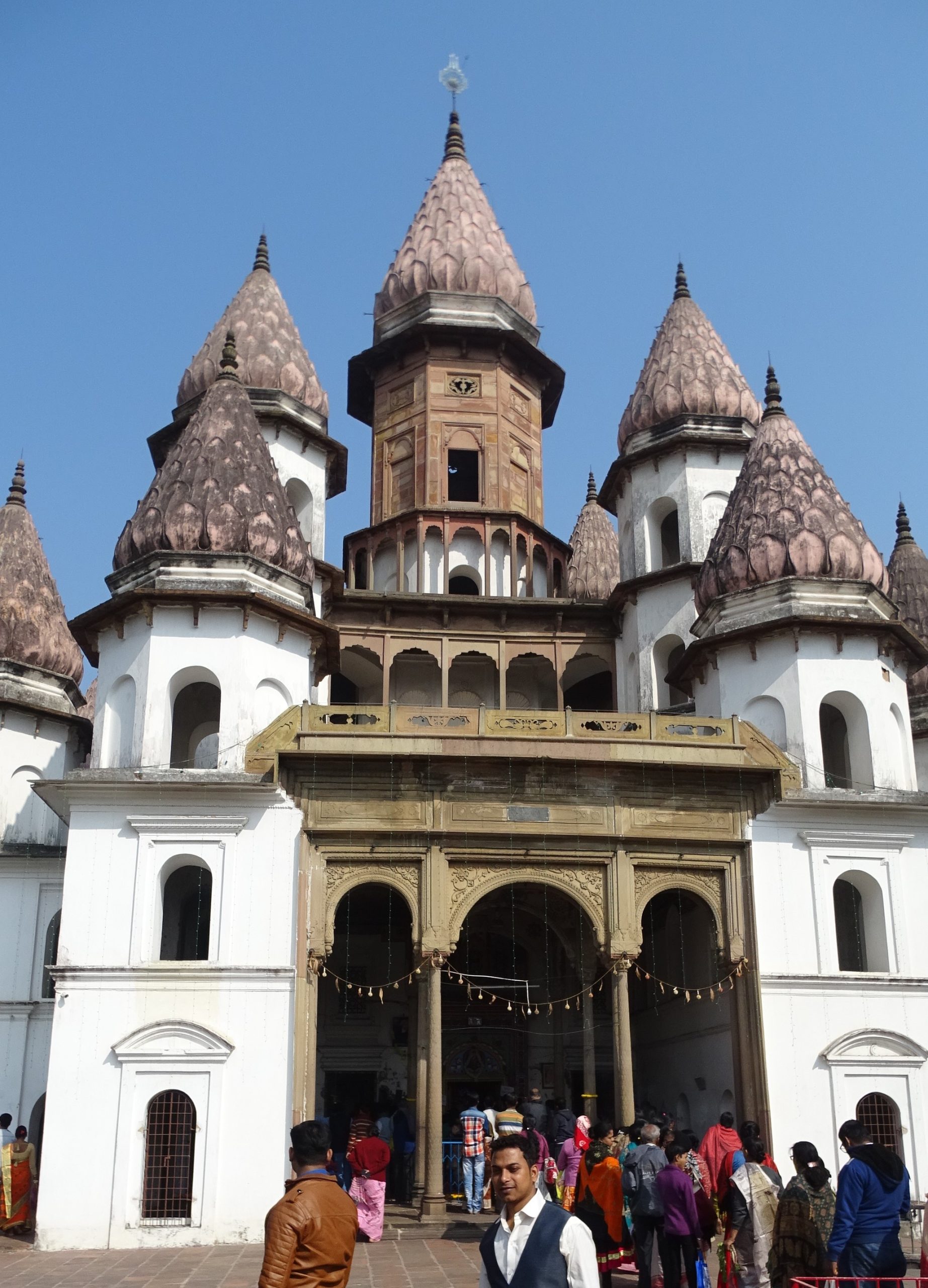
১৬৫৬ খ্রিস্টাব্দে মুঘল সম্রাট শাহজাহান বর্ধমান জেলার পাটুলির রাঘব দত্ত রায় কে সাতগাঁও অঞ্চলের একুশ টি পরগনার জমিদারি প্রদান করেন। তার পুত্র রামেশ্বর দত্ত। পরবর্তীকালে রাজা উপাধি পান। তিনি বাঁশ ঝাড় অধ্যুষিত এই এলাকা পরিষ্কার করে একটি দুর্গ নির্মাণ করেন। এখান থেকে এলাকার নাম হয় বাঁশবেড়িয়া। রামেশ্বরের মৃত্যুর পর তার পুত্রর রঘুদের এবং পরের রঘুদেবের পুত্র গোবিন্দ দেব বাঁশবেড়িয়ার রাজা হন। গোবিন্দ দেবের মৃত্যুর পর তাঁর পুত্র নৃসিংহ দেব তাদের পারিবারিক সম্পত্তির বেশ কিছুটা দখল নেন। নৃসিংহদের তন্ত্রচর্চা করেছিলেন এবং হংসেশ্বরী মন্দিরটির পরিকল্পনার মধ্যে এই তন্ত্রচর্চার ছাপ দেখতে পাওয়া যায়।
হংসেশ্বরী মন্দির স্থাপত্যের দিক থেকে কিছুটা প্রথা বহির্ভূত। ত্রয়োদশ রত্ন এই মন্দিরটি পাঁচতলা। বিভিন্ন তলসম্পন্ন জায়গায় শিখরের সমাহার হয়েছে। এই শিখর রচনা এবং তার ভেতরকার নকশায় তান্ত্রিক সাধনার দর্শন প্রতিফলিত। চুড়াগুলি বৃহদায়তন এবং মোচাকৃতি।
In 1656, Mughal Emperor Shah Jahan granted the zamindari of twenty-one parganas in the Satgaon region to Raghav Dutta Roy of Patuli in Burdwan district. His son Rameshwar Dutta later received the title of Raja. He cleared this area, which was inhabited by bamboo bushes, and built a fort.
From here the area got its name Banshaberia. After the death of Rameshwar, his son Raghudev and then Raghudev's son Govinda Dev became the king of Banshaberia. After the death of Govinda Dev, his son Nrisimha Dev took over a large part of their family property.The Tantric style of worship of the Narasimhas were practiced, and the imprint of this Tantric practice can be seen in the plan of the Hanseswari temple.
The Hanseswari Temple is a bit of an outlier in terms of architecture. This thirteenth pinnacled is a five-story temple. There are a number of spires at different levels. The spire composition and its internal design reflect the philosophy of Tantric practice. The towers are massive and conical.

